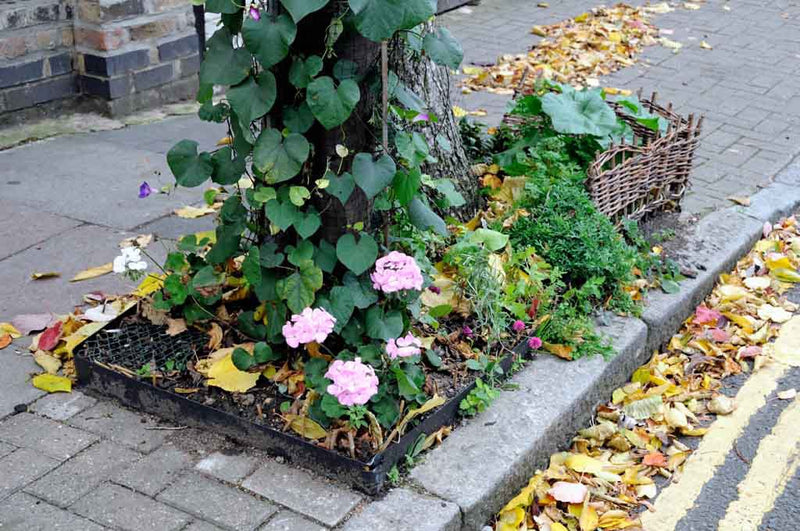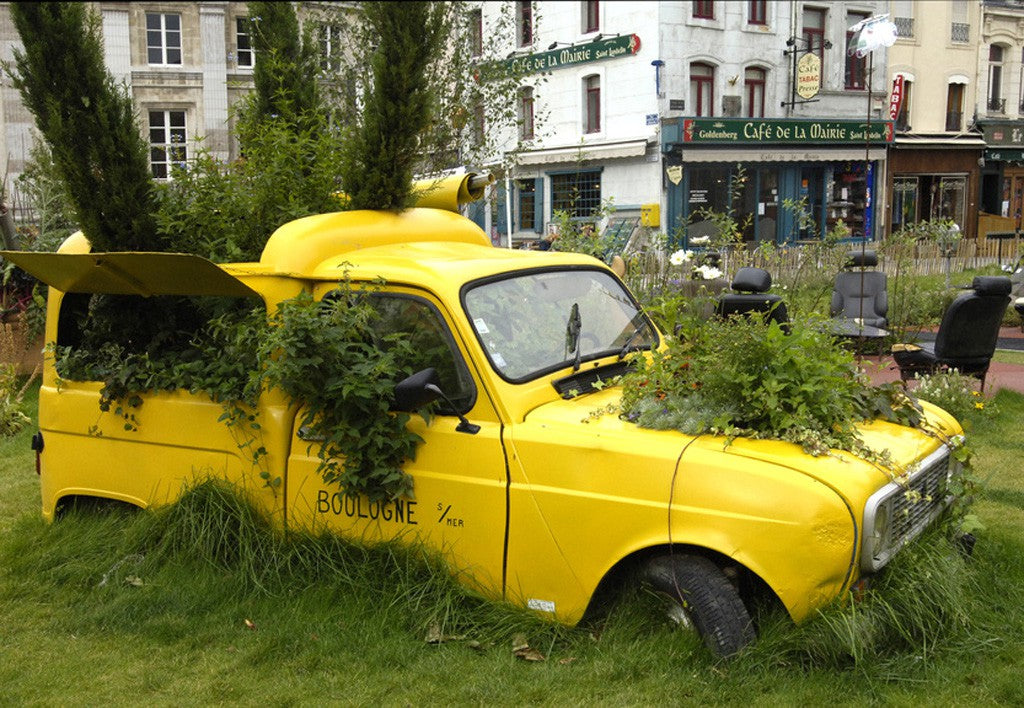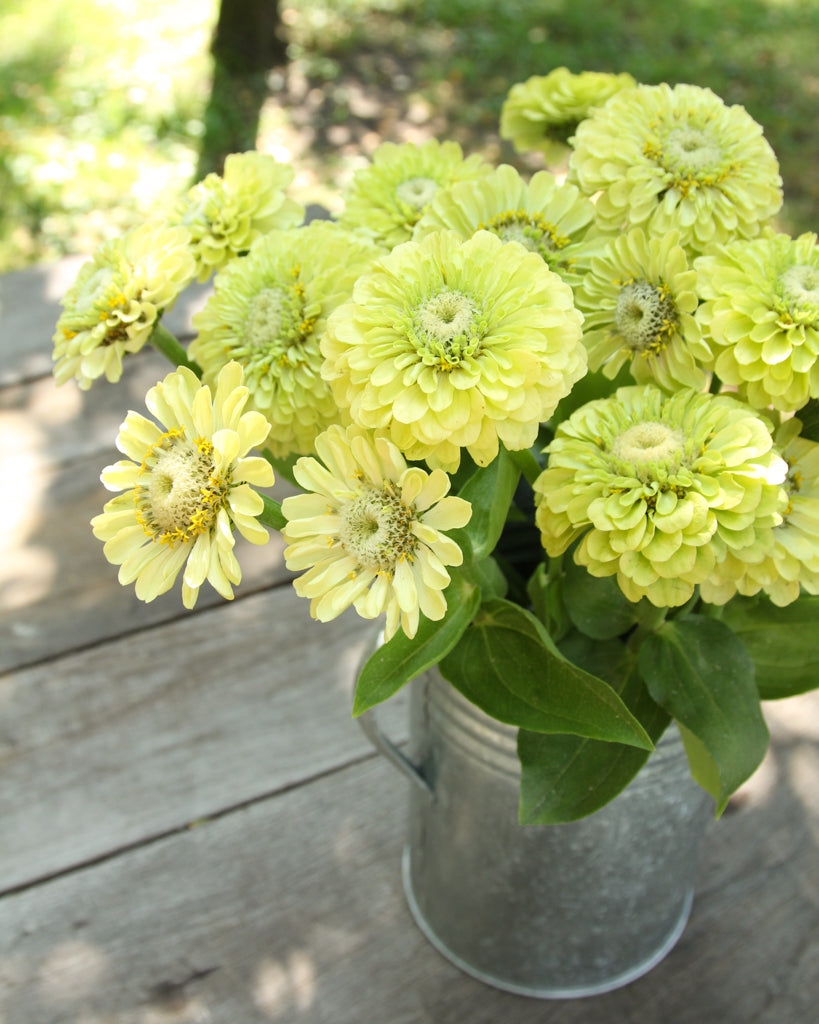Ever heard of guerrilla gardening?
Their weapons are shovels, rakes, and seed bombs; their targets are desolate, barren urban corners. Thanks to the actions of the guerrilla gardeners, these suddenly become greener and more colorful overnight.



Colorful islands provide surprises
Have you ever had that "Oops, where did that suddenly come from?" moment? You get off the subway as usual in the morning, follow the stairs to the street, and suddenly you see it: a small, colorful group of balcony flowers: bright red geraniums, a slightly premature orange dahlia, brilliant white daisies, and even a tomato plant. They're all milling around in the small patch of earth around the street tree, where usually only cigarette butts land, neighborhood dogs investigate, or bleary-eyed partygoers put down their last beer; and now, there, albeit modestly, a small, blooming landscape has emerged. Or by the subway tunnel, just before the train disappears into the darkness, plastic waste rises in the wake of the breeze and sinks back to the ground, when a sunflower suddenly beckons you. And in the spot around the corner, where the sidewalk slabs, dotted with old chewing gum stains, merge almost seamlessly into an ash-gray privacy wall, which in turn is crowned by rows of barbed wire, nasturtiums have been winding their way for a few days, happily pushing out blossoms. If such forbidding, dreary, and desolate corners of a big city have suddenly become greener, more colorful, and more beautiful overnight, then it certainly wasn't elves or garden gnomes at work, nor the night shift landscape gardeners from the district depot, but activists from the "guerrilla gardening" movement.
In the beginning there were the Green Guerrillas
Originally, burying plants at night or throwing seed bombs into inaccessible places was an expression of civil disobedience in public spaces – an unusual means of political protest, so to speak. Nowadays, the secret "surprise plantings" of guerrilla gardening are also attracting a lot of support from "harmless" city dwellers. The fan base is diverse, from young to old. If you ask about the origins of the garden guerrilla, which translates as "small army," you have to go back to 1973, specifically to New York. There, the artist Liz Christy founded the group "Green Guerrillas." Together with friends, neighbors, and volunteers, they cleared a vacant lot in the center of New York of garbage and debris and planted a community garden there. This was the beginning of the guerrilla gardening movement. In Europe, the green fighters first came to attention on May 1, 2000, in London. Environmental activists, anti-globalization protesters, and people with convictions simply ploughed up a lawn in Parliament Square and planted it in order to “take back the streets.”
Take initiatives!
Today, many larger cities have similar initiatives that continue to beautify the cityscape secretly and illegally. In Berlin, there is "the Garden Pirates," in the south of the country, "Guerilla Gardeners Munich," and in the north, too, the group "Guerilla Gardening
Hamburg" or campaigns such as in spring 2011, when a Hamburg Facebook user called for the nationwide "Sunflower Guerrilla Days" to sow flowers in their city. Interested hobby gardeners from around the world arrange to plant flowers in illegal ways via social networks. Of course, this doesn't stop ambitious guerrilla gardeners from going out on their own, without a group-dynamic online appointment, and transforming a traffic island from ash gray to colorful. Some initiatives have even made the leap from illegality. For example, a few years ago, "Blütentraum activists" from Hamburg, in consultation with the district authorities and the gardening department, beautified the intersection at the Schlump subway station and received an award from the Körber Foundation for their work. The new trend of such planting commitments or flower bed sponsorships on one's own doorstep is even expressly welcomed by the city. No wonder – in times when public coffers are practically empty, people are happy to leave the “field” to private “greenfingers” with a love of colorful flowers.
Gardening together in the city
The guerrilla gardeners' fight against desolate urban spaces is now taking on new forms; the whole thing has evolved into a movement: urban gardening. Many young city dwellers are now living out their desire for self-sufficiency, for their own harvests, within the collective of their neighborhood residents; urbanity as an environment worth experiencing and conscious of. And so, parking decks are being transformed into mobile vegetable gardens, vacant lots into ecological kitchen gardens, and many a guerrilla garden into social community gardens. There are many great examples of this in Germany's larger cities: the Gartendeck in Hamburg, the Prinzessinnengärten, and the neighborhood garden "Ton, Steine, Gärten" (Ton, Steine, Gärten) at Mariannenplatz, both in Berlin-Kreuzberg, or, as they say in Bavaria: "o'pflanzt is!" (It's planted!) – that's the motto of a relatively new community garden in Munich.
Basic seed bomb recipe – Ingredients for 6 seed bombs:
5 tbsp soil
4 tbsp clay powder (also known as clay or
Clay flour in natural building materials stores)
1 tbsp small seeds (2 tbsp large seeds)
1 tsp chili powder
4 tsp water
TIP: Clay soil is best for use; it's naturally sticky. Wondering why chili or cayenne pepper? This keeps voracious ants away. They love the nutrients in the seeds.
(from the book: “Changing the World with Seed Bombs” by Josie Jeffery)
Who invented it?
Seed bombs have a long tradition in Japan. Incidentally, the Japanese gardener Masanobu Fukuoka (1913–2008) adopted this gardening trick from his ancestors. With the time-tested "soil dumpling" method, the microbiologist and farmer was already a pioneer of natural cultivation and sustainable agriculture in 1938, long before us.














